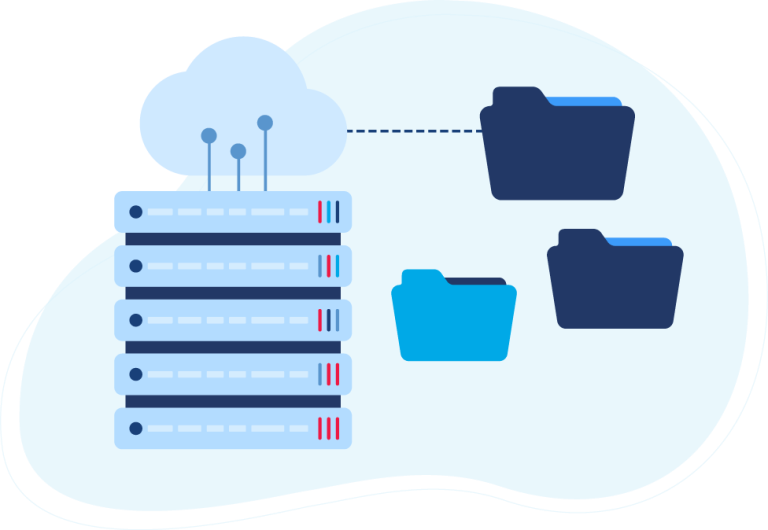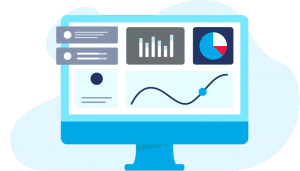If the mere mention of words like ‘API’ and ‘webhook’ make your eyes glaze over, you’re definitely not alone. Doing even a simple Google search for these terms brings back millions of results ranging from the highly technical, to the outright incorrect. But understanding what APIs and webhooks are and how they can potentially impact your business is critical to empowering your business’ growth.
With 26+ years of experience integrating data, VL OMNI breaks down what you need to know about APIs, webhooks, and data integration strategy so you can sit at the table with service providers and your IT department to ensure you’re getting the best possible long-term solution for your business.
What are APIs?
The key to all your data automation dreams starts with three little letters: A-P-I. Application program interfaces (APIs) come as part of cloud-based applications and are the portal for moving data into and out of applications: no API, no data movement!
Watch this short video on APIs for an overview of what they are and how they work.
They essentially function as messengers, delivering requests to providers requesting the data (targets), and providing responses back to the source. APIs make it possible to automate your data movements between applications and their API(s) – again, without an API this is impossible to do.
It’s important to understand that not all APIs are created equal, too — there are definitely good and bad ones. The quality of your applications’ APIs impact what you can do; a bad API may mean the difference between achieving your automation goals or continuing to use work-arounds and manual processes.
APIs and Data Integration
Another important concept around APIs and data integration is that integration is an absolute: you’re either 100% integrated, or you’re not integrated at all. Finding that you’re still manipulating your data once it reaches target applications? Sorry to break the news to you, but you’re not fully integrated.
You are likely ready for a more robust solution that applies your business rules directly to the data transformation. While your API provides the functionality to automate data movements both into and out of cloud applications, webhooks are the mechanism allowing for the configuration of how that data can be moved.
What are Webhooks?
As “user-defined https callbacks”, webhooks are the configurable mechanism that allows you to control when and how your data moves out of an application.
Webhooks operate in one of two ways: push or pull. Push webhooks are event-triggered and are instantly received. Pull webhooks are processed at a scheduled time, often sending data in batches. The webhook format and its configuration will vary from business to business.
The difference between push and pull webhooks
Order volume and frequency are just two factors that have bearing on webhook configuration. So, are you receiving 100 orders per day, or 100 orders per month? Should your ecommerce orders be pushed to your ERP, CRM, and other applications instantaneously? Or instead, should they be moved in batches at regular time intervals? Where are bottlenecks and pain points in your order-to-fulfillment flow today, and can better use of APIs and webhooks help?
Questions like these can help you understand your business needs before onboarding a solution or partnering with a solution provider to meet your data integration needs.
The Big Picture
When integrated and configured together properly, APIs and webhooks can automate your data in a way that best suits your needs. This means freeing up crucial time and resources so you can continue to develop your goals and strategies. When these elements are brought into a fully automated integration system that’s scalable and includes your business rules, you’ll be in a much better position for agility and growth!
For example, say your technology stack includes eCommerce platforms like Shopify Plus or Bigcommerce, Copper as your CRM, and MS 365 as your ERP. You’ve grown beyond the need to simply move basic data packages like orders, invoices, and so on; instead, you want to reach 100% automation by applying your business rules to your data transformations. In your next iteration in your data integration strategy, you want to achieve the following goals:
- Have data pulled off your Shopify Plus store at 15-minute intervals based on your average orders per day and peak shopping times,
- Have customer names split up into first name and last name, and ported into corresponding Copper fields,
- Order and customer data to be pushed to MS 365, and inventory updates to be pushed back to your Shopify Plus store
API for eCommerce and Why it’s Important
APIs are the most efficient way in today’s eCommerce world for data to communicate between applications. APIs are the glue that connects data together and allows applications to easily access it. There are different types of API’s whether they be REST-based or SOAP-based.
The key benefits of Ecommerce APIs: are security, speed, scalability. Security is most important for all ecommerce applications keeping your and your customer data safe. Speed is essential for doing business in 2020. Unnecessary lags or downtime can be the deciding factor in your customer’s experience journey. Lastly, scalability will allow you to last the test of time during high sales periods like BFCM and low economic downturns.
The ability for your data to grow and shrink with you and the times is what keeps Merchants in business for the long haul. In fact, APIs are shown to improve the customer experience as you sell across all omnichannel commerce.
Take your business to the next level
With a good understanding of APIs and webhooks, you can now confidently source new applications to your application mix. When looking for a solution, keep agility front-and-center in your strategy. Look for a solution that allows your business to make quick pivots to meet the quickly changing demands of the market.
In the end, if you find your business needs to change to suit the needs of your data integration strategy, stop, and re-evaluate. Your data integration strategy should meet your business’ needs, not the other way around!
With these relatively simple pieces of knowledge now in your tool bag, you’re now in a better position to make sure you’re getting what your business needs. With decades of expertise in data movement and over 300 connectors in our integration library for both cloud applications and EDI, VL OMNI, our iPaaS platform, and joint customer-facing dashboard provides agile and scalable SaaS data integration.
Let’s Move Your Data
Learn How Your Data Integration Strategy Can Help Or Hinder Long-Term Scalability And Agility
Editor’s Note: Originally published on June 28, 2017. This post has been revamped and updated for comprehensiveness in September 2020.
 D365 Business Central
D365 Business Central Netsuite
Netsuite


